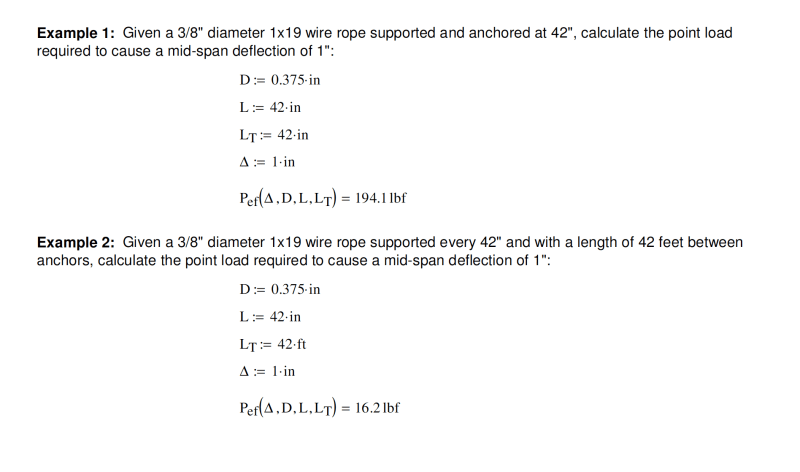Does anyone have a reference for designing guardrails using 3/16 stainless steel aircraft cable as noted below. Properties of the cable will be determined.
The total length of cable is 50'-60' horizontal. The cable is supported by posts at 4' o/c vertical and the cable passes through the posts without hinderance (or friction). The cables are anchored at the ends by posts. The cables are located at 3" o/c horizontal. The cable spacing must prevent a 4" dia sphere from passing. I'm looking at determining the tension required to prevent passing of the sphere. Can anyone suggest a paper?
-----*****-----
So strange to see the singularity approaching while the entire planet is rapidly turning into a hellscape. -John Coates
-Dik
The total length of cable is 50'-60' horizontal. The cable is supported by posts at 4' o/c vertical and the cable passes through the posts without hinderance (or friction). The cables are anchored at the ends by posts. The cables are located at 3" o/c horizontal. The cable spacing must prevent a 4" dia sphere from passing. I'm looking at determining the tension required to prevent passing of the sphere. Can anyone suggest a paper?
-----*****-----
So strange to see the singularity approaching while the entire planet is rapidly turning into a hellscape. -John Coates
-Dik


![[smile] [smile] [smile]](/data/assets/smilies/smile.gif) ) I've submitted my solution and am awaiting for acceptance. To reduce deflection is is necessary to preload the cable. This has a big impact on the end achorages.
) I've submitted my solution and am awaiting for acceptance. To reduce deflection is is necessary to preload the cable. This has a big impact on the end achorages.